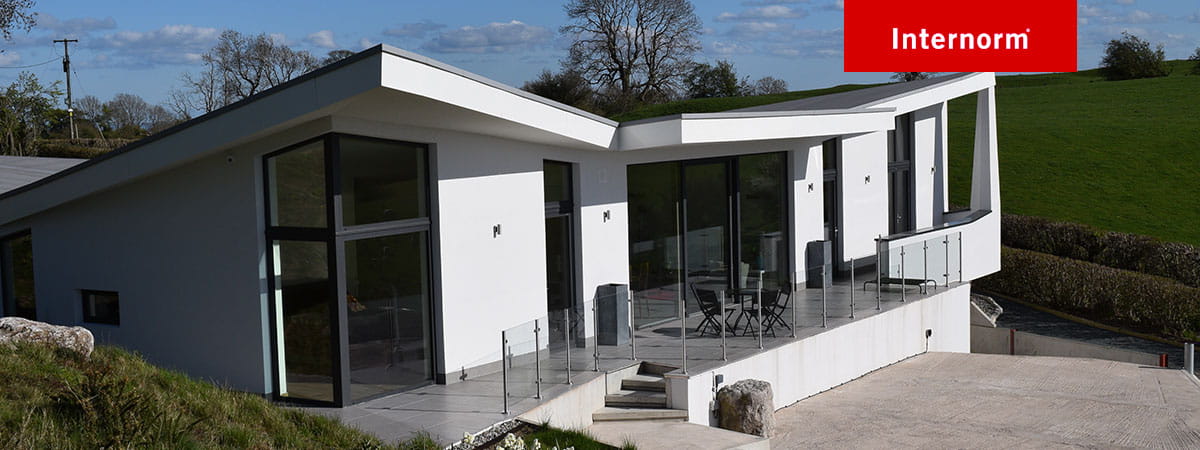
Internorm Thermal Insulation
A major thermal weak spot in a building is the windows, and a house can lose approximately 25% to 30% of its energy through the windows, for this reason if you are trying to create a thermally efficient home improving the windows is essential.
A windows insulate quality is referred to as a U value. The lower this value is, the better the thermal insulation the window has. Thing that improve the U-value of a window are the glass type, the insulation of the frame, and additional features like Internorm roller shutters and Internorm window shutters improve the U value.
Winter thermal protection
To make a thermally efficient home the aim is to reduce the heat and energy loss through the transparent components in a home: such as the windows, doors and facades when you are physically heating the property to an economically feasible amount and by doing this reduce the emission of CO2 by using your heating less. The parameter of the heat transmission coefficient UW is stated in W/m2K (watts per square metre kelvin), which is either mathematically calculated according to EN ISO 10077 or meteorological established according to EN ISO 12567. The following factors influence the heat transmission coefficient.
Uw:
- Heat lose and gain through the glazing Ug
- Heat movement through the frame Uf
- Linear heat loss coefficient of composite glass edge ψ
Summer heat protection
Insulated Internorm Frames and specific Internorm glazing options can be used to ensure thermal regulation to create a cool equilibrium. Overheating caused by solar gain in a property can be avoided by using thermally efficient Internorm constructive measures. Guidelines concerning upper limits in temperatures are stated in national standards (e.g. ÖNORM B 8110/3):
- Upper limits in temperature t*, day-time ≤ + 27 °C
- Upper limits in temperature t*, night-time ≤ + 25 °C
